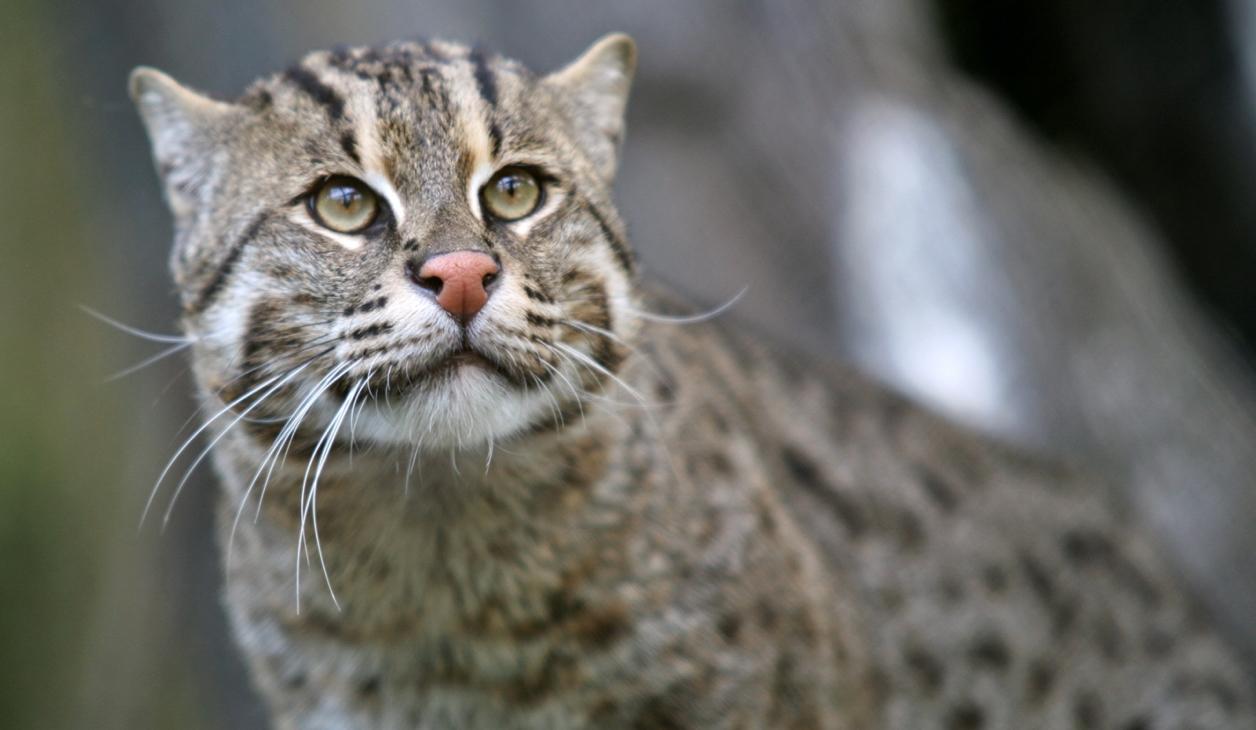Caught on video: Endangered ‘fishing cat’ still alive and hunting its watery prey in Cambodia
The fishing cat (Prionailurus viverrinus) is an endangered breed of wild cat native to South and Southeast Asia. As its name suggests, it hunts fish.
Just when you thought it was safe to live in the water. Aquatic creatures of Cambodia, be advised: The fishing cat is out there and none of you are safe.
The fishing cat (Prionailurus viverrinus), an endangered species of wild feline, has been disappearing from its native habitat in the wetlands of South and Southeast Asia over the past decade.
Researchers have stepped up efforts to study and conserve the species, according to the International Union for Conservation of Nature (IUCN), which listed the fishing cat as "endangered" in 2008 — but they've rarely been able to spot them. In Thailand, for example, researchers tried and failed for years to capture the fishing cat on camera.
It's an enormous (and fortunate) achievement, then, that Cambodia’s Centre for Biodiversity Conservation (CBC) — a partnership between Fauna & Flora International (FFI) and the Royal University of Phnom Penh — was able to find the enigmatic feline.
The fishing cat had last been spotted in Cambodia in 2003, and conservationists were beginning to worry it had disappeared from the country completely. This year, researchers set up 32 cameras in five locations in hopes of finding evidence that the cats were still around. Two cameras, at the Peam Krosaop Wildlife Sanctuary and Ream National Park, turned up footage of both male and female fishing cats.
Now that researchers know fishing cats are still living in southwest Cambodia, they can start working on a conservation plan. There's a lot to do, and still a lot to learn.
“Asian wetland habitats are rapidly disappearing or being modified by human activity, so fishing cat numbers have declined dramatically over the last decade and the remaining population is thought to be small,” said Ret Thaung, project leader for FFI, in a statement.
While information on fishing cats in Thailand and Cambodia is scarce, they're thought to be extinct in Vietnam, and there's no record of them living in Laos.
"It is clear that urgent steps are needed to protect these cats from snaring and trapping and to conserve their wetland habitats," Thaung said. "But to do this effectively we needed to get a better idea of where they live.”
The story you just read is accessible and free to all because thousands of listeners and readers contribute to our nonprofit newsroom. We go deep to bring you the human-centered international reporting that you know you can trust. To do this work and to do it well, we rely on the support of our listeners. If you appreciated our coverage this year, if there was a story that made you pause or a song that moved you, would you consider making a gift to sustain our work through 2024 and beyond?
